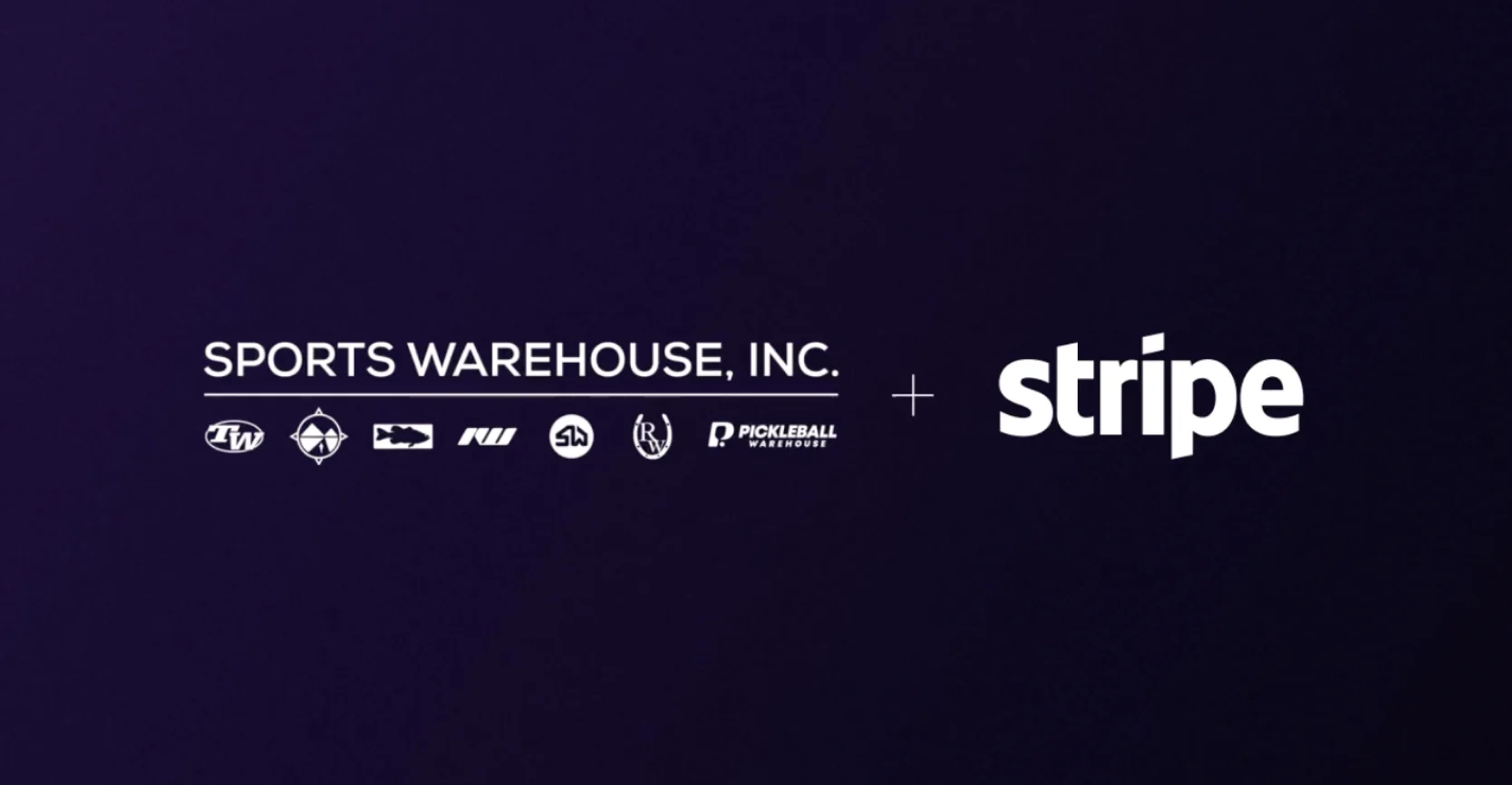Challenge
Since launching the ecommerce site Tennis Warehouse in 1993, founder Drew Munster had always been a hands-on founder, including building his own backend systems and integrating them with third-party payment processors. But that approach became more complicated as the company evolved into a 12-brand group of specialty sporting goods retailers operating under the broader parent company Sports Warehouse (which includes Running Warehouse and Tackle Warehouse) and expanded to Europe and Australia. By 2022, Munster realized he had taken his mix of payment processing systems as far as it could go.
Across the family of brands, Munster and his team observed consumer habits rapidly changing, with more customers shopping on their phones. Among Tackle Warehouse customers, for example, some anglers were even shopping from their boats. To retain those customers, the company knew it needed to add mobile-first payment options.
Unfortunately, expanding the company’s payment offerings would create more complications in an already complicated system that had separate flows for each payment type. To simplify the process of accepting payments and issuing refunds, Sports Warehouse needed a unified system that could process everything from credit cards to European bank transfers, Afterpay, Klarna, Cash App, and more in one centralized payment flow.
The lack of a consolidated payment system also made it difficult to gain an enterprise-wide view of payments information across geographic markets for accounting purposes. What’s more, Sports Warehouse’s compliance burden had grown with its expansion, and its manual fraud management process was time-consuming.
The right software would clearly need to be sophisticated enough to address these needs. But it still needed to be flexible and developer-friendly to allow Munster’s small team of in-house developers to implement it quickly across all 12 websites in the Sports Warehouse ecommerce ecosystem.
Solution
Sports Warehouse chose to consolidate its payment processing on Stripe Payments, a global payment platform that supports more than 100 payment methods and more than 135 currencies. The result was a single payment flow for all transactions, regardless of the customer’s payment method or geographic region.
To enhance its frontend payment processing, Sports Warehouse used Stripe’s Optimized Checkout Suite, which includes Stripe Elements (a set of embeddable UI components that improve the checkout flow and drive conversion); access to those 100 different payment methods; and Link, an accelerated checkout by Stripe that autofills customer payment information to create a fast, easy checkout experience.
Sports Warehouse embedded the Payment Element into its existing checkout flows, which varied slightly across regions. Once embedded, the Payment Element automatically presents customers with payment methods relevant to them and gives Sports Warehouse the ability to turn on additional payment methods as needed with no additional code. Sports Warehouse plans to add Link to make it even easier for customers to complete transactions seamlessly.
Consolidating on Stripe gave Sports Warehouse access to the Stripe Dashboard, the central user interface for navigating account resources and managing workflows. The Dashboard unified the company’s accounting across markets. “Being able to speak the same language, on the payments side, is a really helpful thing for us,” Munster said.
Stripe Radar, which uses machine learning to protect against fraud in real time, unified Tennis Warehouse’s fraud prevention process. “When you’ve got one system, it’s easier to get a sense of where the dangers are,” Munster said. “Having one set of controls also gives you reassurance that you’re not leaking from the inside.”
Finally, Stripe’s thoughtful software design, thorough documentation, and effective support avoided implementation hiccups. “We never encountered anything that didn’t work in Stripe,” Munster said.
Results
Easy implementation of new payment options
Stripe’s Payment Element allowed Sports Warehouse brands to easily offer more than 14 payment methods including digital wallets, such as Apple Pay, Google Pay, and Amazon Pay. The company also added local payment options in Europe, such as Przelewy24, iDEAL, and giropay, and buy now, pay later options, such as Klarna and Afterpay.
Since adding these options, 27% of Sports Warehouse’s payments in Germany are made using PayPal. In Australia, 13% of Sports Warehouse’s payments are made using Afterpay—and these transactions have a higher average order volume than payments made via credit card. In the US, Apple Pay is Sports Warehouse’s second most-popular payment method.
3.64% uplift in authorization rates and simplified refund process
Centralizing all payment flows through Stripe allowed Sports Warehouse to take advantage of Stripe payment optimization tools, such as network tokens and the Stripe card account updater solution. These features boosted Sports Warehouse’s base authorization rate 3.64%.
The new, unified payment system also simplified Sports Warehouse’s refund process. Previously, each payment method required its own refund process, some of which were quite complicated. Stripe gives Sports Warehouse one system for processing refunds—a streamlined solution that Munster said has been “a massive time saver.”
First Stripe implementation completed in four weeks
Thorough documentation, elegant APIs, and responsive customer support helped Sports Warehouse easily implement Stripe on its first website. “We were able to get Stripe up and running in just a handful of weeks,” Munster said. From there, the company easily integrated the rest of its sites onto the consolidated platform.
Prior to working with Stripe, I saw the payments world as really a necessary evil. You just sort of needed to get the money somehow. But as we’ve gone further with Stripe, we’ve realized the benefits of the different features and seen how using a modern payment system designed by fellow programmers has been really good for us.


